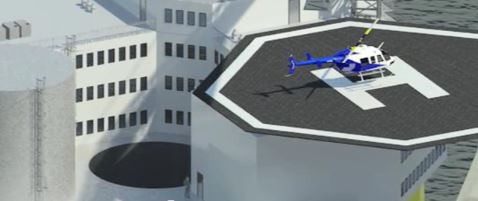Nuclear Video Matinee: Offshore Nuclear Plants
Jacopo Buongiorno of the Massachusetts Institute of Technology discusses some of the advantages of a nuclear reactor concept under development in collaboration with industry and other universities: floating off-shore nuclear power plants, constructed entirely in a shipyard, anchored off the coast, linked to the electric grid via undersea cable. Earthquakes and tsunamis would not be a threat, the ocean would be readily available to serve as a heat sink for reactor cooling, emergency evacuation planning would be a lesser consideration...







